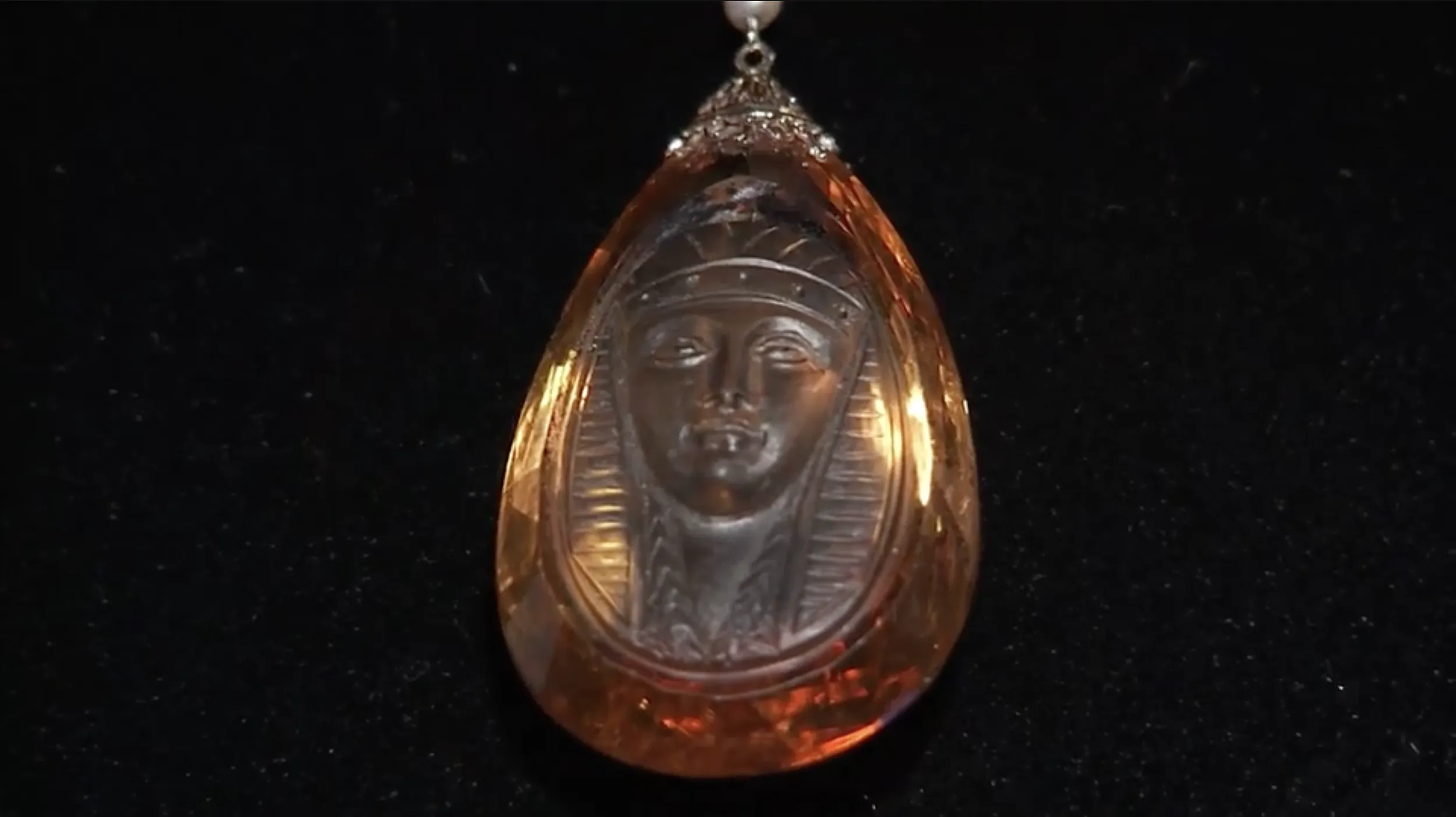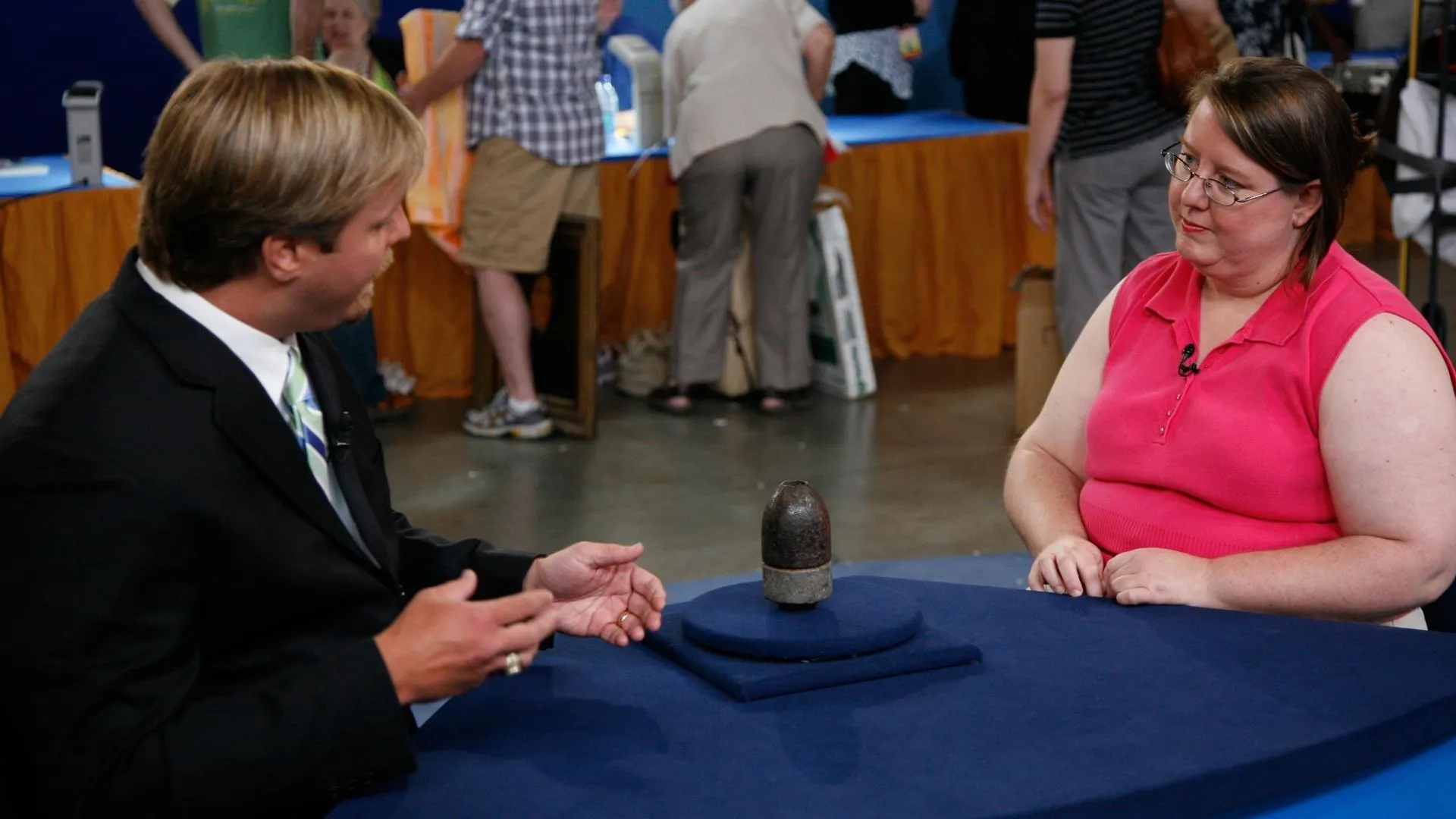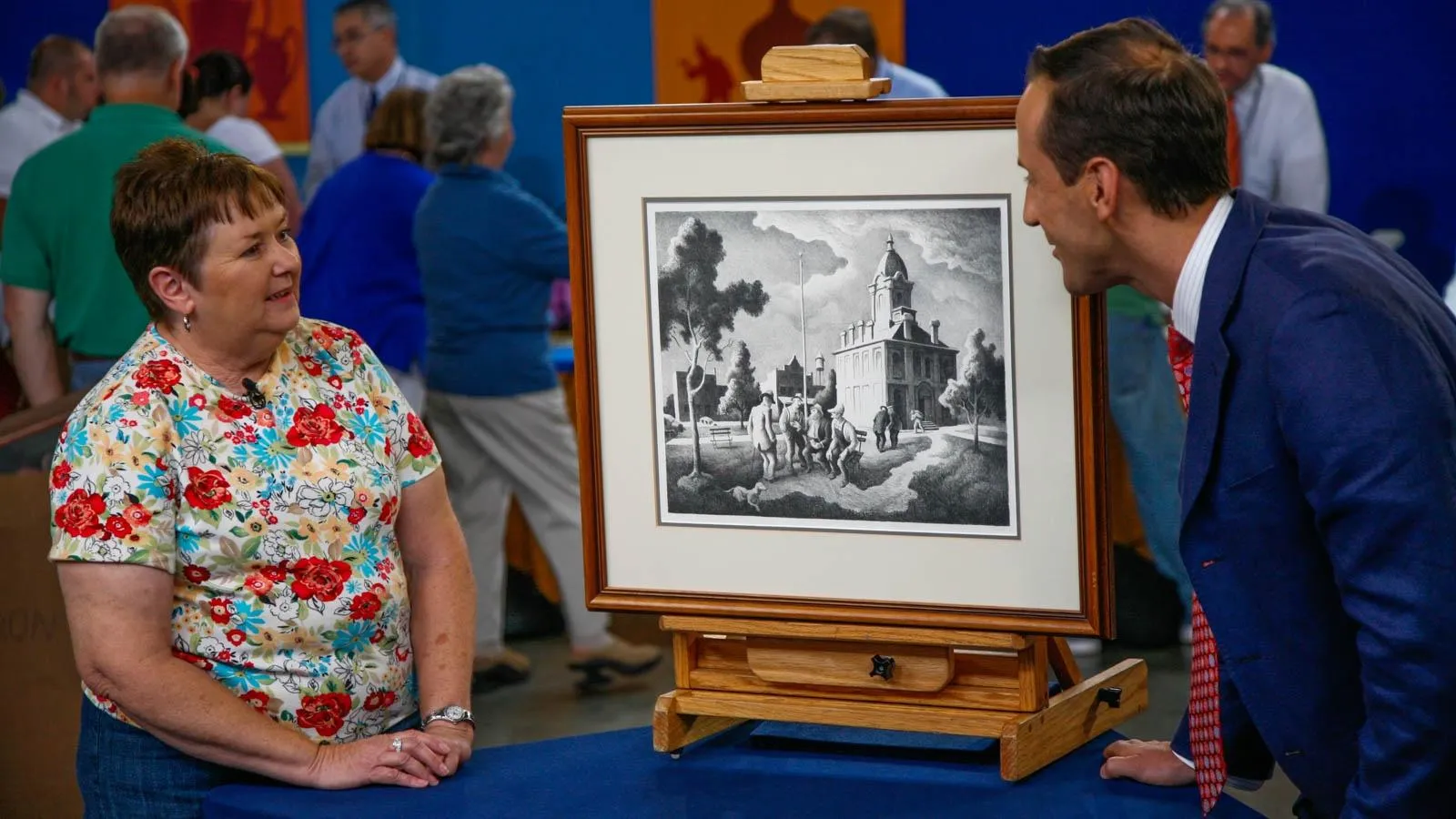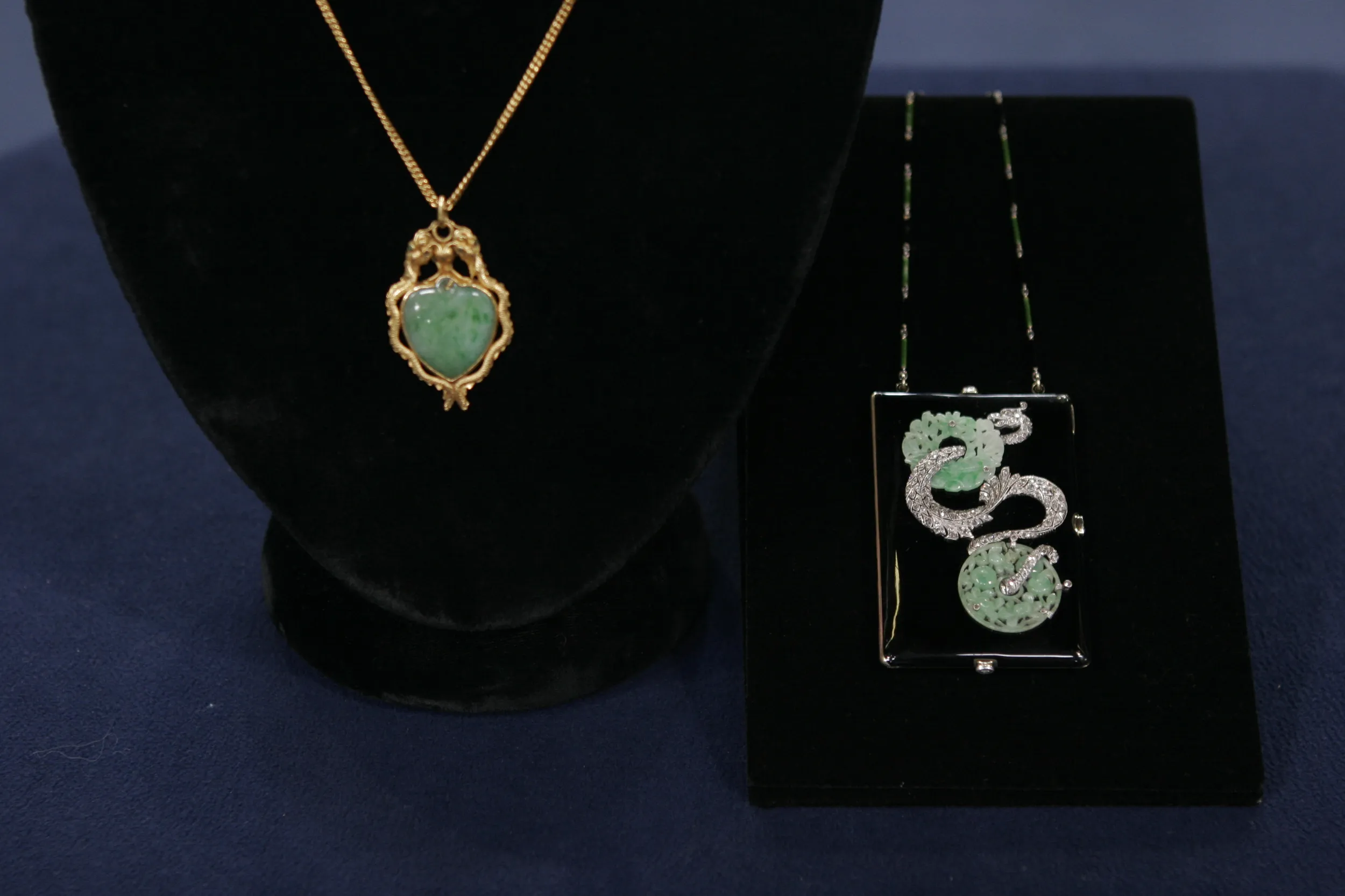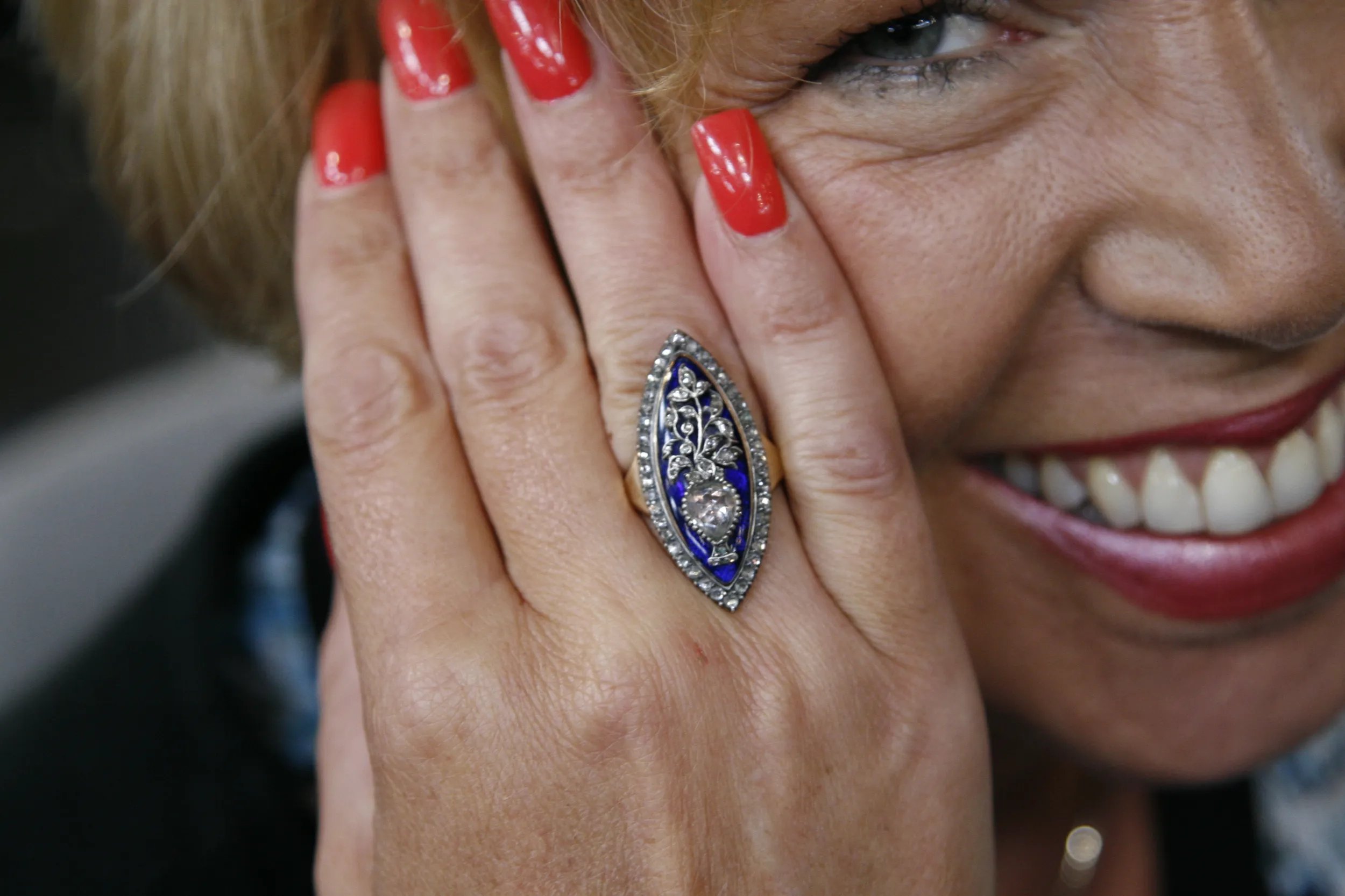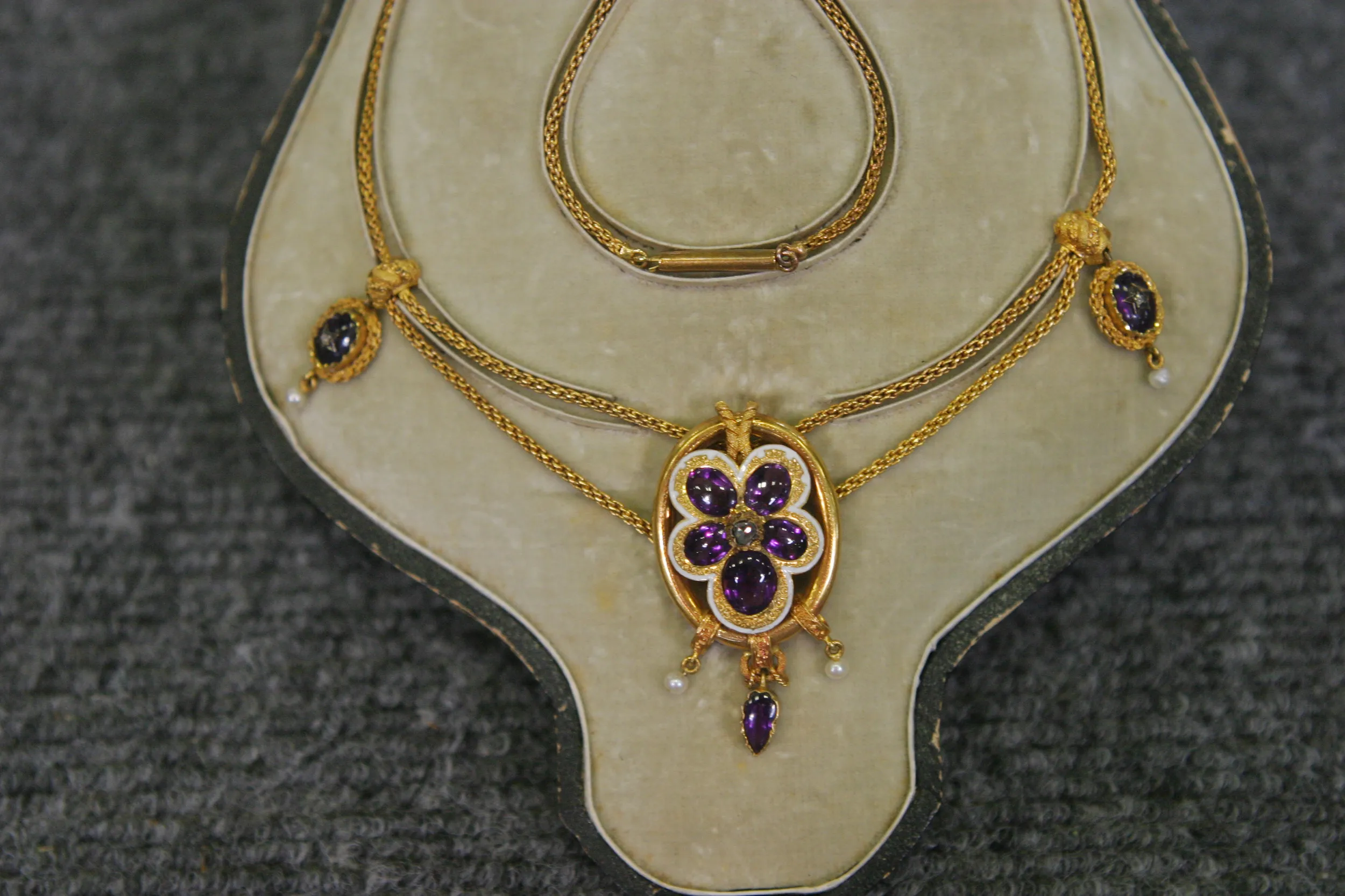GUEST: I live next door to a lady who... Her husband had in, inherited a large amount of jewelry and, um, land from a family in Portsmouth, Ohio. And I watched her wear this necklace all my life. And around 2004, they had a sale, an auction. And this was in a boxed lot, which I paid $170 for.
APPRAISER: This is what we call Egyptian Revival. And when they brought artifacts out of Egypt in the 1920s for the museum, there was Egypt-mania. It's European. The stone was carved in Germany. The pearls are real. The pendant and the beads are carved out of citrine, which is a semi-precious stone. And the carving on the large pendant is an Egyptian Revival... Don't go over on me now! (laughing): It's okay.
GUEST: Okay, I'm fine.
APPRAISER: It's okay-- this is like winning the lottery.
GUEST: It is?
APPRAISER: You did really good. It's white gold.
GUEST: Mm-hmm.
APPRAISER: It's real gold. And the Egyptian carving in the citrine makes it very special...
GUEST: Mm-hmm.
APPRAISER: ...because that's like carving a cameo in a hard faceted stone.
GUEST: Mm-hmm.
APPRAISER: And a lot of work went into this piece, and it's very collectible. At retail, in a jewelry store that sells this kind of estate jewelry, they would command about $4,000 to $4,500...
GUEST: (gasps)
APPRAISER: ...for this piece of jewelry. So, for $175...
GUEST: Amazing!
APPRAISER: ...you did great.
GUEST: Thank you.
APPRAISER: Okay, you can stop shaking now.
GUEST: Oh, I'm... (laughs)
APPRAISER: I'm ready to hold you up.
